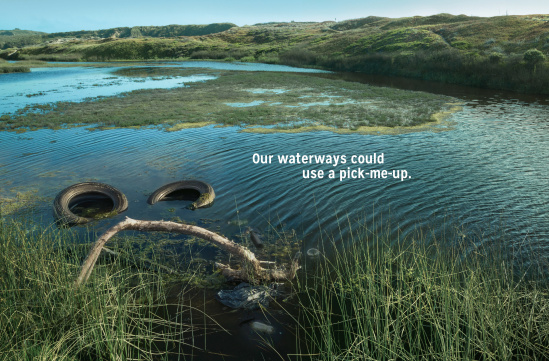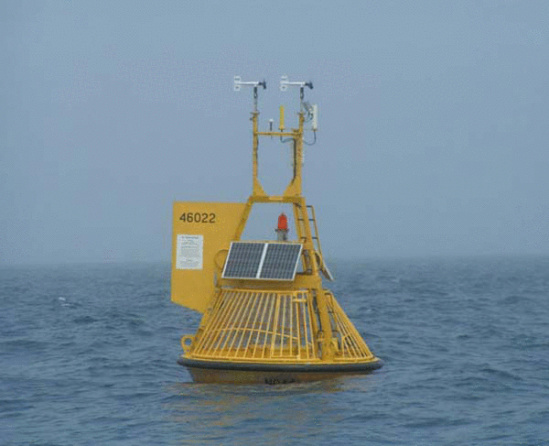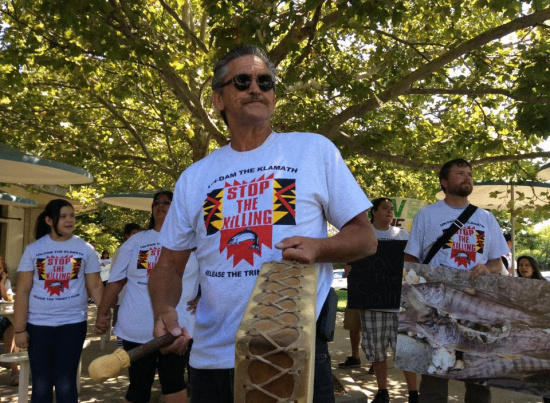Image courtesy California Coastal Commission
Less litter!
Let’s start local. None of us like trash on the beach. We’ve talked about this. Please be happy to know that Coastal Cleanup Day is only one month away, but you still have time to sponsor (if you are a business or organization), be a site captain (you leader-type, you!) and/or join the largest volunteer event in California by being part of a trash-collecting team (yay!).
Sponsors, email Jennifer Savage (me!) at jsavage@yournec.org.
Captains and volunteers, email Brandon Drucker at Brandon@yournec.org.
Image courtesy NOAA
Swell announcement
In other optimism-inspiring news, if you, like me, have despaired over the longstanding defunctness of NOAA’s National Buoy Data Center Station 46022, take heart!
Senior Meteorologist Brian Garcia reported from the National Weather Service office on Woodley Island that things are “looking good” regarding getting both the “22” and the Scripps North Spit buoy back online by the end of next week. He emphasized the tentative expectations, however, noting, “These are very weather-dependent operations, so let’s hope for light winds and low seas next week.” Here’s to that!
How ‘bout that radioactivity?
Expanding out to a West Coast-wide view, Our Radioactive Ocean’s Ken Buesseler and Colleen Durkin have been busy sharing the project’s initial success and statistics. Over 30 sampling sites have been launched from Southern California up to Alaska and including the Hawaiian islands. Here’s what the citizen-science submissions have shown so far:
Using the most sensitive methods to measure your water samples, we have detected only cesium-137, the “legacy” cesium that remains from 1960s atmospheric weapons testing. This isotope is still in all ocean basins because of its relatively long 30-year half-life, which means it takes a long time to decay away. Levels of cesium-137 in all 43 samples analyzed thus far average 1.5 Bequerels per cubic meter of water, which is equivalent to one-and-a-half decay events per second per metric ton of water. This is a very small number if we compare it to the 7,400 Bq/m3 used by U.S. EPA as the drinking water limit, and the millions of Bq/m3 of cesium detected in the ocean off Japan in 2011 at the peak of the accident, which at that level are of considerable concern for direct negative impacts on marine biota and human health. Keep reading…
Acidification, f’reals
Regular ocean-news devourers already know our ocean is getting more acidic due to atmospheric carbon pollution – but might have missed NPR’s thought-provoking article last month discussing the potential role of marine protected areas as a way to understand and mitigate ocean acidification. Special attention is given to eelgrass beds – a focal habitat used in selecting sites for protection under the Marine Life Protection Act and found in Humboldt Bay – and how they may actually buffer and sustain our ocean resources in the face of a changing ocean climate.
Many West Coast elected officials are taking ocean acidification seriously, convening a groundbreaking panel with leadership support from California, Oregon, Washington and British Columbia. The West Coast Ocean Acidification and Hypoxia Panel is working to improve knowledge on this issue to guide better decisions for the future of our oceans. Explore the Panel’s work and vision – and find participating scientists – on the Panel’s website, created by the California Ocean Science Trust. Stay informed by signing up for the Panel newsletter.
Photo courtesy Seventh Generation Fund for Indigenous Peoples
‘Release the dam water!’
In other take-this-seriously news, a coalition of tribes and other concerned citizens (including Northcoast Environmental Center staff) marched in Sacramento yesterday, demanding the Board of Reclamation take the threat of a 2014 fish kill seriously, calling for the BOR to “Free the Klamath!” and more. Good coverage via KCRA.
Get deep
Let’s circle all the way back home. Remember Humboldt State’s new submarine? Tune into Coastal Currents today at noon (KHUM 104.7 FM or khum.com) to find out more about the ROV’s missions, plus additional science and fun happening at the HSU Marine Lab.
Jennifer Savage is the Northcoast Environmental Center’s Coastal Programs Director.



CLICK TO MANAGE